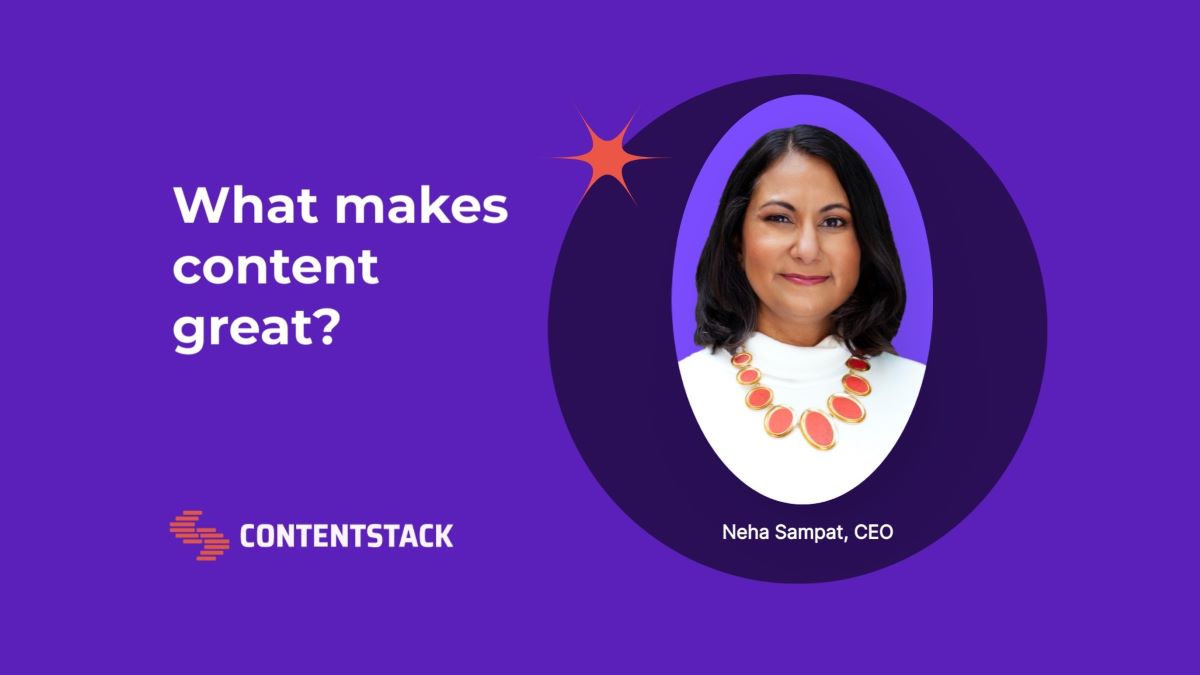What makes content great?

"You're not just competing with other brands. You're competing with every other piece of content on the internet." That was a mic drop from Juliette Olah, senior manager of editorial at Booking.com, during a recent “People Changing Enterprises” episode.
We get so confined in our worlds that often we're just asking ourselves: How can I do better than what I did last time? But shouldn't we ask ourselves how we can be the best in our niche?
For Olah, that niche is travel. That means at any given time she's competing with everyone from Travel and Leisure to Airbnb, the Travel Channel, and Drew Binsky, a YouTuber with over 3.7 million subscribers.
Consumers have endless options. That's why we need standards to ground us on what makes content great. These are my suggestions:
Elements of great content
Overarching, unique angle
Listen Notes estimates that over 3 million active podcasts exist today. Of those, about 350,000 list "business" as their genre, which is where Contentstack's “People Changing Enterprises” sits. We could have produced a Composable DXP podcast since we are the category leaders.
Instead, we focused on who we wanted to build relationships with: enterprise technologists and marketers. We made them the heroes as they share their learnings and stories of triumph every day.
Our unique angle? Successful transformation stories from within enterprises.
Drenched in POV
Once you have your overarching angle, make sure every individual piece of content has a POV. Google clamped down on SEO-driven content for a reason. Its top 10 ranked articles tied to any search query all sound the same. Raise your hand if you agree!
You can avoid that by applying some challenger brand techniques: Lighthouse your beliefs with each piece of content. Or, drench it in POV, as I like to say. This works no matter the channel. On LinkedIn, you'll never not know where CEO of Refine Labs Chris Walker stands on marketing attribution. Here's an example of when I spoke a hard truth — entrepreneurs come from anywhere, not just Ivy League schools — on the same platform.
Be helpful
This doesn't mean that it must be a "how to." It does mean that your audience must find it helpful in some way.
Your content could be inspiring, make them think differently or save your audience time. Your content might be helpful simply because it allows them to lose themselves in storytelling after a busy week. (Thank you, New York Times Sunday Read.)
Make it visual
This can be as simple as making something easy to consume with white space, bullets and pull quotes. But video, infographics, original photography, memes, cartoons and VR storytelling work, too. With tech, the visual sky is the limit!
You'll rarely see a single-spaced, dense article get mainstream play because we simply don't have the attention spans anymore. In an omnichannel content world, play to the strengths of each channel you're active in.
Or do something entirely visually unexpected. Postmark, the email delivery service, created a series of comic books poking fun at common email problems like churn and getting stuck in spam folders.
Prioritize speed
Admittedly, this one isn't as "creative" as the first four elements. But it's what unlocks your competitive advantage. You can excel with the first four, and if someone beats you to it or your target audience simply moves on from a trend, you've lost an opportunity.
Some retailers were able to move quickly promoting their versions of the Zara pink slip dress that went viral on TikTok. Most didn't. Our research shows that 78% of retailers say it takes them two weeks or more to execute a standard marketing campaign, and 63% struggle with the ability to update content. Speed is non-negotiable, so I'd recommend removing any barriers to achieving it.
Booking.com's Olah said, "Remain open-minded that there's always going to be changes on a micro or macro level. You have to enable the ability to flex and adapt your approach." When you get the first four principles right — and wrap your entire process with the ability to move quickly — you can compete with the best content out there. You really can.
If you don't believe me, listen to “People Changing Enterprises” for more examples of regular people accomplishing unimaginable things within their organizations.
About Contentstack
The Contentstack team comprises highly skilled professionals specializing in product marketing, customer acquisition and retention, and digital marketing strategy. With extensive experience holding senior positions at renowned technology companies across Fortune 500, mid-size, and start-up sectors, our team offers impactful solutions based on diverse backgrounds and extensive industry knowledge.
Contentstack is on a mission to deliver the world’s best digital experiences through a fusion of cutting-edge content management, customer data, personalization, and AI technology. Iconic brands, such as AirFrance KLM, ASICS, Burberry, Mattel, Mitsubishi, and Walmart, depend on the platform to rise above the noise in today's crowded digital markets and gain their competitive edge.
In January 2025, Contentstack proudly secured its first-ever position as a Visionary in the 2025 Gartner® Magic Quadrant™ for Digital Experience Platforms (DXP). Further solidifying its prominent standing, Contentstack was recognized as a Leader in the Forrester Research, Inc. March 2025 report, “The Forrester Wave™: Content Management Systems (CMS), Q1 2025.” Contentstack was the only pure headless provider named as a Leader in the report, which evaluated 13 top CMS providers on 19 criteria for current offering and strategy.
Follow Contentstack on LinkedIn.






.svg?format=pjpg&auto=webp)
.svg?format=pjpg&auto=webp)
.png?format=pjpg&auto=webp)






.png?format=pjpg&auto=webp)


